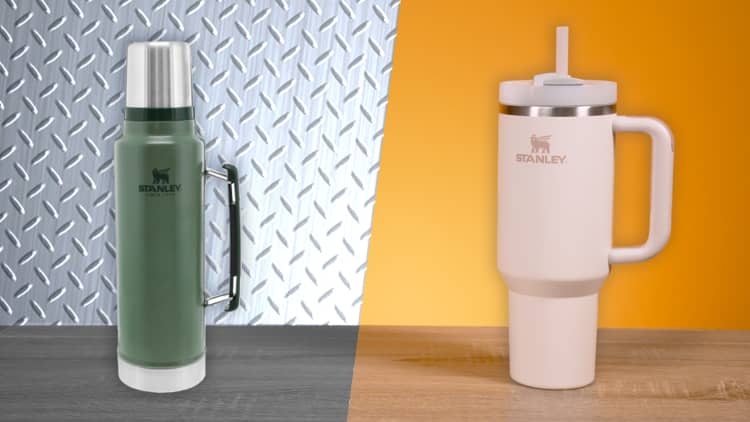Fruits and vegetables are an essential part of the healthiest diets, but it's important to know that raw produce can expose you to harmful germs.
Consuming contaminated fruits and vegetables can increase your risk of developing foodborne illness, according to the Food and Drug Administration and there have been concerning outbreaks over the past few years from contaminated lettuce, spinach, tomatoes and cantaloupe.
The list of potentially harmful pesticides used to preserve produce have caused so much concern that there's an annual ranking of the produce with the most pesticides called the "Dirty Dozen."
"Just think of the journey that [fruits and vegetables] take from the farm, to the truck, to the grocery store, to the hands of other people that might have touched them and checked them for ripeness, and then your cart. That right there is a lot of transport," says Carissa Galloway, a registered dietitian nutritionist and a Premier Protein Nutrition Consultant and Personal Trainer.
"But also think about the different germs [and] pathogens that come in contact with them, as well as just the environment in which they're grown, things like dirt. We want to make sure that we get all of that off, so we're ingesting all the wonderful nutrition goodness, and not anything else."
To protect yourself from eating fruits and vegetables that are contaminated, the FDA strongly encourages you to clean your produce before eating them.
But what does properly cleaning your fruits and veggies entail? Here's what experts, including Galloway, suggest.
3 simple steps to clean your fruits and vegetables
Before, and after, cleaning your produce, you should always thoroughly wash your hands and clean the preparation materials that you'll be using, including cutting boards and utensils, according to the Centers for Disease Control and Prevention.
Once you're ready to start the process of cleaning your fruits and vegetables, Galloway encourages you to follow these steps:
- Hold the produce in the sink under cold water
- Use a clean paper towel to remove all of the grit and dirt from the produce. You can also use a clean brush that you only use to clean produce for this step.
- Dry the produce with a paper towel if you're not planning to eat it right away to preserve its ripeness. For leafy greens, using a salad spinner for the drying process can also be helpful.
Some additional steps that the CDC recommends are cutting any bruised or damaged parts of produce and removing bruised or torn leaves from lettuce heads or cabbages because they're likely to have more germs or dirt on them.
While some produce can be washed days before use, keep in mind that certain fruits and vegetables like raspberries and tomatoes should be washed right before consumption so that they don't spoil faster, Galloway adds.
Simply wash your fruits and vegetables with cold water
"There are other options and theories out there, but truly the best option is just simply washing [produce] under cold water," Galloway says.
And the CDC agrees with her. While you may often hear about the use of detergent, soap or commercial washes for produce, the agency doesn't recommend it for cleaning fruits and vegetables. The use of baking soda or vinegar to clean produce has become popular as well, but aren't necessary, according to experts like Galloway.
"When you look at the research, when people use baking soda, it does reduce the bacteria a little bit more," Galloways says. But both baking soda and vinegar can potentially affect the integrity of the produce by causing it to spoil faster or taste differently, she notes.
"I think as a dietitian, overall, the point of view is, most Americans don't get the recommended [amount of] fruits and vegetables. So let's make it simpler," she adds. "Really what's going to make the massive [positive] impact on your health is increasing your servings of fruits and vegetables."
Want to land your dream job in 2024? Take CNBC's new online course How to Ace Your Job Interview to learn what hiring managers are really looking for, body language techniques, what to say and not to say, and the best way to talk about pay.



